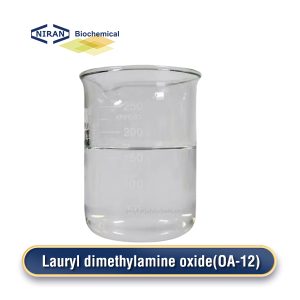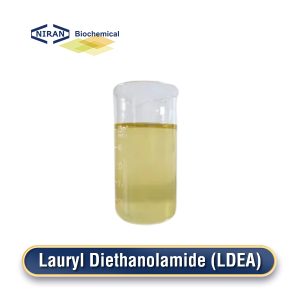AEO-2/ AEO-3/ AEO-7/ AEO-9, Ethoxylated Lauric Alcohol
- MOQ: 1000KG
- Shelf Life: 2 years
| Product | CAS Number | Chemical Formula | Synonyms |
| AEO-2 | 68439-46-3 | C₆H₁₃O₂(C₂H₄O)n (n≈2) | Alcohol Ethoxylate C6, C6EO2 |
| AEO-3 | 69011-36-5 | C₉H₁₉O₃(C₂H₄O)n (n≈3) | Alcohol Ethoxylate C9, C9EO3 |
| AEO-7 | 9002-92-0 | C₁₄H₂₉O₇(C₂H₄O)n (n≈7) | Alcohol Ethoxylate C14, C14EO7 |
| AEO-9 | 9043-30-5 | C₁₆H₃₅O₉(C₂H₄O)n (n≈9) | Alcohol Ethoxylate C16, C16EO9 |
Product Description
What Is AEO-2 / AEO-3 / AEO-7 / AEO-9?
AEO-2 / AEO-3 / AEO-7 / AEO-9 are a range of Alcohol Ethoxylates, which are non-ionic surfactants derived from the reaction of fatty alcohols with ethylene oxide (EO). The primary difference between these variants lies in the alkyl chain length (C6, C9, C14, C16) and the number of ethylene oxide (EO) units added, which influences their hydrophilic-lipophilic balance (HLB) and application.
Preparation:
The synthesis of these alcohol ethoxylates involves the following steps:
- Reaction: When an alkaline catalyst, usually NaOH or KOH, is present, fatty alcohol and ethylene oxide (EO) react.
- Process: The reaction occurs at high temperatures and pressures, leading to ethoxylation.
- Purification: To obtain the desired product, the reaction mixture is neutralized and purified by distillation, which eliminates surplus reactants and byproducts.
Related Parameters:
| Items | AEO-2 |
| Color (Pt-Co) | Max. 10.0 |
| Water % | Max. 0.1 |
| pH value (25°C, 1% solution) | 6.0-7.0 |
| Hydroxyl value (mg KOH/g) | 191.0-210.0 |
| Polyethylene glycol % | Max. 1.0 |
| Items | AEO-3 |
| Colour (Hazen) | Max. 20 |
| Hydroxyl Value (mg KOH/g) | 168.0 – 178.0 |
| Moisture % | Max. 0.10 |
| pH value (1% water solution at 25°C) | 6.0 – 7.0 |
| Active Substances % | Min. 99.9 |
| Items | AEO-7 |
| Colour (Hazen) | Max. 30 |
| Hydroxyl Value (mg KOH/g) | 108.0 – 116.0 |
| Moisture % | Max. 0.20 |
| pH value (1% water solution at 25°C) | 6.0 – 7.0 |
| Cloud point (1% water solution) | 53.0 – 59.0 |
| Items | AEO-9 |
| Colour (Hazen) | Max. 50 |
| Hydroxyl Value (mg KOH/g) | 92.0 – 100.0 |
| Moisture % | Max. 0.30 |
| pH value (1% water solution at 25°C) | 6.0 – 7.5 |
| Cloud point (1% water solution) | 72.0 – 84.0 |
| Active Substances % | Min. 99.0 |
Recommended Dosage of AEO-2 / AEO-3 / AEO-7 / AEO-9:
| Product | Applications | Dosage |
| AEO-2 | Household detergents, Personal care (shampoos, body wash), Industrial cleaners | 1%-3% |
| AEO-3 | Cosmetics, Industrial cleaning agents, Agricultural formulations, Oilfield chemicals | 1%-6% |
| AEO-7 | Textile and leather processing, Industrial cleaners, Emulsifiers, Agricultural formulations | 2%-8% |
| AEO-9 | Cosmetics (lotions, creams, facial cleansers), Cleaning products, Surface active agents | 2%-5% |
AEO-2 / AEO-3 / AEO-7 / AEO-9 Has Wide Range of Uses:
1.AEO-2 Personal Care Products: Often found in face cleansers, body washes, shampoos, and other disinfecting formulas. Excellent foaming and gentle skin washing are provided.
Household Detergents: Used in laundry detergents, dishwashing liquids, and surface cleaners for its strong emulsifying and foaming properties.
Industrial Cleaning: Applied in industrial cleaners for effective removal of oils, greases, and stains.
2. AEO-3 Cosmetics: Used in lotions, creams, and facial cleansers. It offers good emulsification and solubilizing effects, making it suitable for emulsions and skincare formulations.
Agricultural Chemicals: Acts as a wetting agent and emulsifier in agricultural sprays and formulations.
Industrial Cleaners: Employed in heavy-duty industrial cleaning products, such as degreasers, due to its ability to dissolve oils and other hydrophobic substances.
3. AEO-7 Textile Industry: Widely used in textile processing, including scouring, bleaching, and dyeing operations, due to its ability to emulsify oils and disperse dyes.
Leather processing: Used to soften and degrease leather in the industry.
Oilfield and Agricultural Applications: Utilized in formulations that require enhanced emulsification and wetting of hydrophobic surfaces.
4. AEO-9 Personal Care: Popular in cosmetic formulations such as hair conditioners, moisturizers, and cleansing products, offering mildness and stability to emulsions.
Surface Cleaners: Employed in surface cleaners and degreasers due to its high emulsification and wetting properties.
Emulsifying Agent: Used in various industrial applications requiring effective emulsification and dispersion of oils or fats.
User Asked Question:
Q: What are the key differences and applications of AEO-2, AEO-3, AEO-7, and AEO-9 based on their ethoxylation levels, foaming capacity, emulsifying power, and solubilizing ability?
A:
| Property | AEO-2 | AEO-3 | AEO-7 | AEO-9 |
| Ethoxylation Level | 2 EO | 3 EO | 7 EO | 9 EO |
| Foaming | Low | Moderate | High | Very High |
| Emulsifying Power | Moderate | High | Very High | Very High |
| Solubilizing Power | Moderate | High | High | Very High |
| Wetting Power | Moderate | High | Very High | Very High |
| Application Examples | Mild cleansers, household cleaners | Cosmetics, industrial cleaners | Textile and leather processing, industrial cleaners | Personal care products, surface cleaners |



